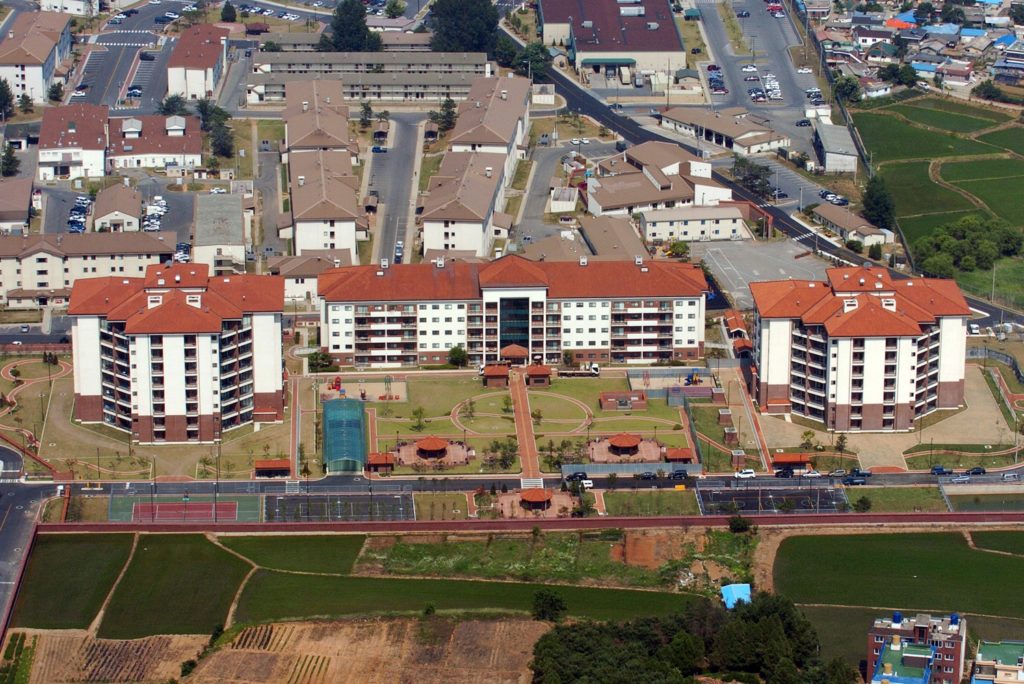The Peninsula
U.S. Forces in South Korea Open Their New Headquarters
Published July 14, 2017
Category: South Korea

By Seung Hwan Chung
The U.S. Eighth Army, the main symbol of U.S. Forces Korea (USFK), transferred its headquarters from Yongsan base in central Seoul to Camp Humphreys in Pyeongtaek on July 11. Located 40 miles south of Seoul, Camp Humphreys is the center of the largest construction and transformation project in the U.S. Department of Defense’s history. Moreover, the new headquarters represents the end of the Eighth Army’s 64-year presence in Seoul.
USFK has been expanding Camp Humphreys under a deal with the South Korean government. Both governments agreed to consolidate USFK through two plans: the Yongsan Relocation Plan (YRP) and the Land Partnership Plan (LPP). The YRP is the relocation of the Yongsan Garrison to Pyeongtaek, while the LPP will consolidate the 2nd Infantry Division from north of Seoul to Pyeongtaek.
Camp Humphreys has been transformed into a new base equipped with up-to-date facilities. Construction projects include unit headquarters buildings, vehicle maintenance facilities, barracks, family housing, medical facilities, a military communications complex, a commissary, a post office, schools, and child development centers. It is estimated that over 42,700 soldiers, civilians, and their family members will move to Camp Humphreys by 2020. There are 28,500 U.S. troops located in South Korea.
Lt. Gen. Thomas S. Vandal, Commander of the Eight Army said, “The $10.7 billion dollar project increased the size of U.S. Army Garrison Humphreys, making it the largest U.S. Army garrison overseas in the Department of Defense.”
Not all of USFK is moving, however. Combined Forces Command is expected to maintain its location at Yongsan, and the 210th Field Artillery Brigade will remain near the DMZ. In addition, a joint U.S.-South Korean unit will continue to provide security for the Joint Security Area (JSA). Troops will also make the commute to training ranges, which are located near the border. The Brian Allgood Community Hospital will also remain at Yongsan until the new building is completed at Camp Humphreys.
Vandal emphasized the new base will provide increased security benefits by consolidating units, noting that the U.S. military will no longer have to defend 173 camps and installations scattered nationwide. By moving south of Seoul, the U.S. Army will improve its readiness and effectiveness. Camp Humphreys will facilitate the transformation of the ROK-U.S. alliance. It will also enhance our deterrence against North Korea.
The history of Camp Humphreys goes back to 1919 when the Japanese Military built Pyeongtaek Airfield during its occupation of Korea. During the Korean War, the name was changed to K-6. In 1962, the base was renamed Camp Humphreys in honor of Chief Warrant Officer Benjamin K. Humphreys, a pilot assigned to the 6th Transportation Company. In addition to its airfield, several U.S. Army units are located in Camp Humphreys, including the 2nd Combat Aviation Brigade, elements of the 1st Signal Brigade, the 501st Military Intelligence Brigade, the 65th Medical Brigade, as well as other military units and commands.
The U.S. Eighth Army was activated in Memphis, Tennessee, in 1944. During World War II, it fought in the Pacific Theater of Operations as a field army. With the surrender of the Japanese Empire on 15 August 1945, the Eighth Army led the Army of Occupation in Japan. During the Korean War, the Eighth army served as both a field army and theater army. Since the armistice, it has assisted South Korea, both in rehabilitation efforts after the war and upholding common defense. The Eighth Army has changed from its previous role as an Army Service Component Command to a headquarters that commands and controls the war-fighting South Korea-U.S. Combined Joint Task Force, serving as the Korea Theater of Operations Army Forces command.
Seung Hwan Chung is a reporter with the Maeil Business Newspaper and a visiting fellow with the Korea Economic Institute of America. The views expressed here are the author’s alone.
Photo from Expert Infantry’s photostream on flickr Creative Commons.
